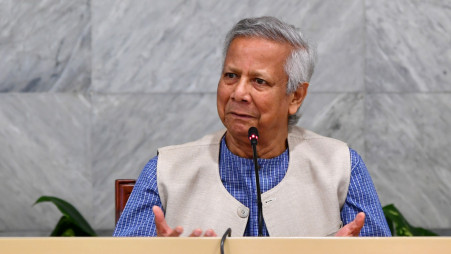The banking sector saw a significant drop in private sector credit growth to 8.3% in April due to sluggish demand resulting from uncertainty among businesses over the prolonged lockdown.
Although the lending rate fell to a historic low, the downward credit growth concerns the central bank as this has a serious impact on employment generation.
The Bangladesh Bank is now thinking of a way to lift the lending rate by mopping up excess liquidity from the banking system thus encouraging banks to lend, said one of its senior executives.
Credit growth started to rebound in February, registering an 8.93% growth, but did not last as the second wave of Covid-19 hit the country. In March, the growth fell to 8.79% and the downward trend continued in April, according to the Bangladesh Bank data.
Also, credit growth was far below the monetary target of 14.8% set for June of the current fiscal year.
Dr Md Habibur Rahman, executive director (research) of the Bangladesh Bank, said the fall in credit growth is not unexpected because of the ongoing lockdown.
But the central bank is trying to boost credit disbursement by simplifying terms and conditions of stimulus packages, he said.
There was no new business project in the last one year due to uncertainties caused by the pandemic, said Mirza Elias Uddin Ahmed, managing director of Jamuna bank.
As a result, imports remained slow, causing a fall in private sector credit growth, he said.
"Moreover, domestic borrowing by the government also remained sluggish due to slow implementation of projects. When the government borrowing from the banking system becomes high, it also boosts business in the private sector, pushing up credit growth," he added.
He said banks are managing their business amid sluggish lending by bringing down costs, with most banks cutting their deposit rates to 2-3% due to excess liquidity.
The low credit growth piled up excess liquidity in the banking system, raising banks' operational costs.
Excess liquidity in the banking sector stood at Tk1,98,465 crore at the end of March this year and earlier crossed Tk2 lakh crore in December last year, the highest in recent history.
Moreover, excess liquidity – pushed up through policy relaxation and pumping of fresh money into the banking system by the Bangladesh Bank in the pandemic year – has now turned into a problem for banks, with both lending and deposit rates coming down to a low level that has started hurting the core banking business and depositors.
The central bank has already informed the government of the current excess liquidity problem along with recommendations for raising the interest rates on savings certificates and simplifying investment conditions for small depositors.
Currently, the highest interest rate on savings certificates is 11.5% while interest rates on deposits have come down to 3-4% because of the surplus in liquidity.
Cheap money brought down the lending rate to 5-7% while implementing the 9% rate was difficult for banks a year back.
On the other hand, government borrowing also declined due to slow project implementations, causing a drastic fall in the yields of government treasury bills and bonds to 1-4%, which was above 9% last year.











